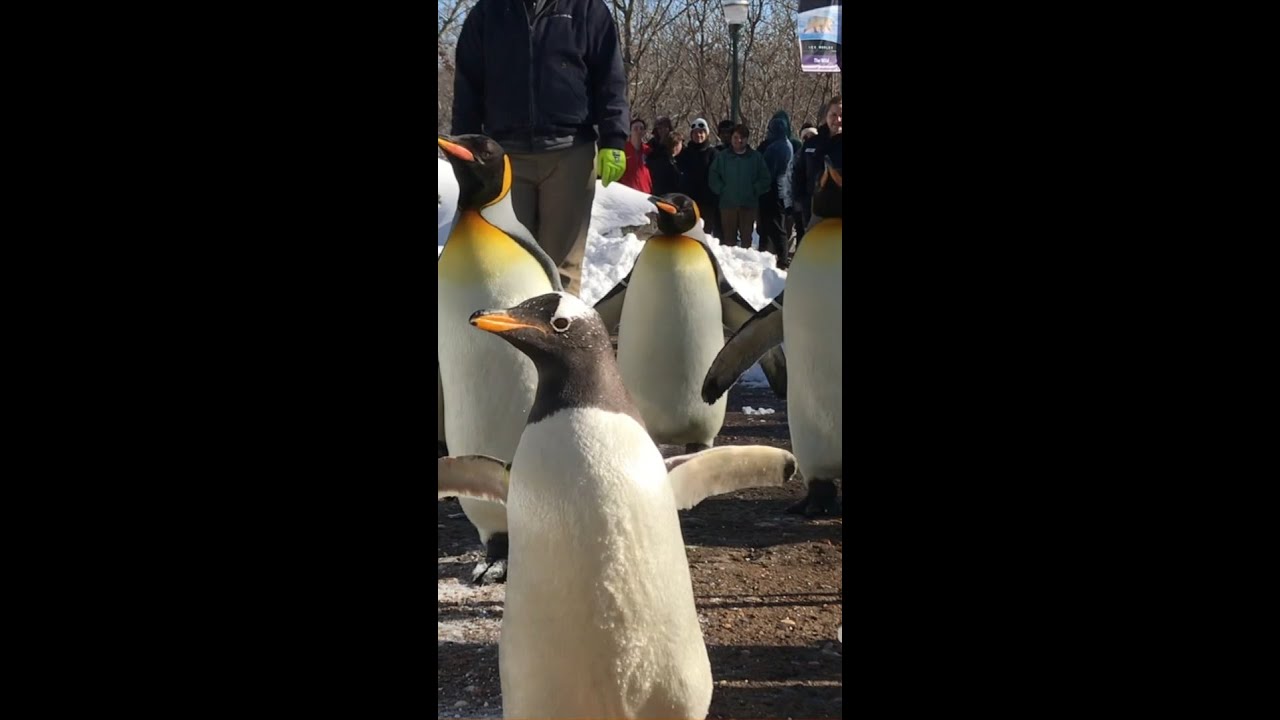- Exploring the specifics of A Penguin SNOW DAY!! and its significance in promoting animal welfare and environmental enrichment in zoo settings.
- Understanding the behavioral patterns and adaptations of penguins in snowy environments, both in the wild and captivity.
- The role of zoos in wildlife conservation and education, with a focus on penguin species and their natural habitats.
- Analyzing the challenges of managing and caring for penguins in controlled environments.
- Highlighting the importance of video documentation in raising awareness and engagement in wildlife conservation initiatives.
As visitors stroll through zoos, they often witness a variety of species thriving in environments mimicking their natural habitats. A Penguin SNOW DAY!! captivates audiences by offering penguins a temporary, snowy environment that invigorates their senses and enlivens their spirits. This undertaking highlights the importance of animal welfare and environmental enrichment in zoo settings.
Penguins, particularly those native to colder climates, exhibit incredible adaptations to their frosty surroundings. Their anatomy is finely tuned for insulation against harsh winds and icy waters. Blubber layers, waterproof feathers, and counter-current heat exchange systems keep these birds warm and efficient. By recreating snowy conditions in captivity, zookeepers aim to stimulate natural behaviors, such as foraging, huddling, and playful interactions that are crucial to their mental and physical well-being.
From a behavioral perspective, snow offers a novel stimulus that promotes active engagement among penguins. They are known to slide, waddle, and dive more energetically during SNOW DAYS. Such events are vital components of a holistic animal welfare approach, ensuring inhabitants do not succumb to the monotony that sometimes accompanies captive life. These enrichments contribute to overall zoo efforts in providing dynamic and complex habitats which encourage natural activity.
Zoos serve dual purposes in both conservation and education, and penguins are excellent ambassadors for these missions. Antarctic and sub-Antarctic penguins, whose numbers are declining due to climate change and overfishing, gain public sympathy and support for conservation through these interactions. Audience engagement increases when they witness these charismatic birds playing in the snow, leading to a greater understanding of their natural behaviors and the challenges they face in the wild.
The significance of A Penguin SNOW DAY!! extends to the educational sector as well, providing an opportunity to emphasize the impacts of global warming on polar and subpolar fauna. Zoos can use these events to draw connections between climate phenomena and the urgency of conservation efforts. Educational programs accompanying such events often delve deeper into penguin ecology, dietary habits, breeding cycles, and adaptations to cold climates.
Zoo management faces intricate challenges when organizing A Penguin SNOW DAY!!. Logistically, it requires access to snow-making technology, which must be sustainable and efficient. Maintaining the right temperature conditions and ensuring the enclosure mimics a safe, natural environment is another consideration. Balancing these technical and ethical considerations is paramount to successful penguin care.
Moreover, physical health assessments are fundamental during such events. Penguins should be monitored for hypothermia, frostbite, or undue stress, ensuring their safety in atypical conditions. Veterinary collaborations and routine checks are indispensable practices that demonstrate a zoo’s commitment to high standards of care.
Video documentation plays a pivotal role in wildlife conservation by extending the reach of educational content. Video_desc captures penguins’ interaction with snow, recording their lively behaviors and the joys of SNOW DAYS. This visual storytelling appeals to a broader audience, creating online conversations that foster a deeper appreciation for wildlife conservation.
In addition to increasing engagement, video content serves educational purposes. It illustrates how zoos innovate to meet animal welfare goals while providing transparent insights into operations and care standards. Educators, students, and enthusiasts benefit greatly from these resources, gaining valuable knowledge in animal behavior and conservation science.
By building public interest and investment in wildlife welfare, creative initiatives like A Penguin SNOW DAY!! encourage broader support for conservation policies. Communities become more aware of environmental challenges facing penguins and other species when these enriching experiences are shared widely and thoughtfully.
In summary, A Penguin SNOW DAY!! represents the confluence of animal welfare, environmental enrichment, educational outreach, and conservation advocacy. It exemplifies how zoos can creatively enhance animal care, engage the public, and drive collective action towards sustaining biodiversity. Through thoughtful events and strategic documentation, they continue to advance knowledge and appreciation for wildlife, paving the way for improved conservation outcomes.
*****
Source Description
This weather is for the birds– especially penguins!
Some king and gentoo penguins ventured outside Penguin & Puffin Coast with keepers to enjoy this wintery weather. They spent their time exploring in the snow and had a fun day of play!
These walks are not pre-scheduled and do not occur on a regular basis. Instead, when the weather cooperates, the birds are given the option to participate in spontaneous and enriching outdoor adventures.


